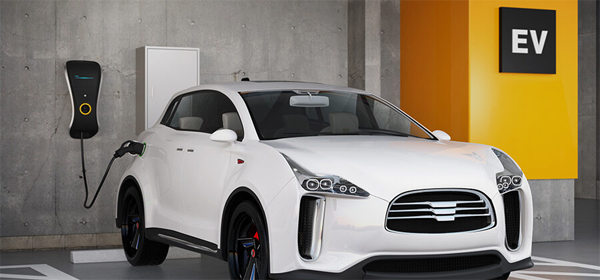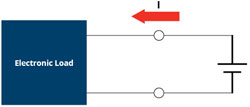|
|

|
|
The battery
is the most
important component
of an
electric vehicle
(EV). Electrical
performance testing
is necessary to
ensure that the
battery meets its
performance
specifications for
operational use. The
challenge is that EV
batteries are
high-power devices,
and
testing EV batteries
requires rigorous
and precise testing
protocols using the
proper power
instrumentation.
This
blog
will outline
the most critical
tests for EV battery
testing and present
instrumentation
options to enable
efficient,
simplified
solutions.
|
|
|
|
|

|
|
EV Battery Test
Methods
|
| |
|
A battery's
most critical performance test
is its
discharge and charge testing.
The
discharge time determines the
battery's
capacity to power the vehicle
over a
distance. The battery's charge
time
determines the state of health
of the
battery and how quickly it can
be
charged.
Another test is an
electrochemical
dynamic response which measures
the
state-of-health (SoH) of the
battery.
The test evaluates the dynamic
response
of the battery. Figure 2 shows
the
response to a pulse of a battery
with
full capacity compared to that
of a
battery with only 70%
capacity.
A programmable DC electronic
load meets
the requirements for discharging
an EV
battery. DC electronic loads can
discharge the battery at varying
rates.
One representative discharge
rate is
based on the power level
consumed by an
electric vehicle during steady
speed,
typically highway driving. That
rate is
estimated to be around 20 to 30
kW. An
electronic load with the
appropriate
capacity can draw a variable
current
represented by drive
power/battery
voltage. The electronic load
should
disconnect itself from the
battery when
its voltage falls to the
manufacturer's
recommended complete discharge
level.
Figure 3 illustrates the test
circuit
for battery discharge.
For the electrochemical dynamic
response
test, you will need an
electronic load
that can generate a pulsatile
load.
Selecting a load with this
capability
will avoid the need to create
the pulse
using external circuitry with
the load.
|
| |

Figure 2.
Electrochemical
dynamic
response
|

Figure 3.
Battery
discharge
with an
electronic
load
|
|
| |
|
A
programmable DC power supply
satisfies
the requirements to charge the
battery.
Initially, the power supply must
charge
the discharged battery using a
constant
current. When the battery
voltage
reaches the charge threshold
level
defined by the manufacturer, the
power
supply should switch to a
constant
voltage mode. Finally, when the
current
drawn by the battery falls to
under 3%
of the battery's rated current,
the
power supply should cease to
supply
charge energy and terminate the
charge
cycle.
Battery manufacturers recommend
charging
Lithium-ion batteries at rates
between
0.5 and 1 C. The rate, 1 C, is
equivalent to 1 A flowing for 1
hour. EV
battery manufacturers rate their
battery
capacities in Wh. For example, a
battery
rated at 1 kWh with a 400 V
rating would
have its Ah rating equivalent to
1
kWh/400 V = 2.5 Ah. Thus a 1 C
charge
rate for this battery would
require a
2.5 A charge current for a
1-hour
duration. A 0.5 C charge rate
would
require 1.25 A and a 2-hour
duration.
Figure 4 shows a battery charge
circuit.
Since conventional,
single-quadrant
power supplies are damaged by
current
flowing into the power supply,
we
recommend using a diode to
ensure that
the battery cannot discharge
into the
power supply.
|
| |
|

Figure 4.
Battery
charge with
a power
supply.
A diode
prevents
battery
current from
flowing
into the
power supply
and damaging
it.
|
|
| |
|
EA
Elektro-Automatik offers
bidirectional
power supplies that are ideal
for EV
battery testing. See
EA-PUB
10000 6U - EA Elektro-Automatik
(eapowered.com) and
Bidirectional
DC Power Supply | EA
Elektro-Automatik
(eapowered.com).
Valuable features include:
|
| |

|
A true
autoranging output
characteristic to
accommodate
increased load
current draw
as battery voltage
declines.
|

|
A built-in
function generator
that can generate
load pulses for the
electrochemical
dynamic response
test.
|

|
60 kW power
capacity in a single
6U, full rack
enclosure. No other
power instrument
manufacturer can
pack as much power
in
as small a package.
Up to 60 kW, a
single instrument
can provide a
complete
solution for
charging and
discharging.
|

|
Paralleling
of multiple
instruments with a
Master-Auxiliary bus
to simplify
interconnection and
control and a
Share-Bus™ interface
to ensure all
instruments equally
share the source or
the load.
|

|
Regenerative energy
recovery for
returning absorbed
energy to the grid
with 96% efficiency.
|

|
Automated
test with a wide
range of interfaces
for
connection to a PC
or a PLC.
|
|
| |
|
|
|
|
|
|
Industries
|
Products
|
Partners
|
Support
|
About
|
Contact Us
|
|
|
|
|